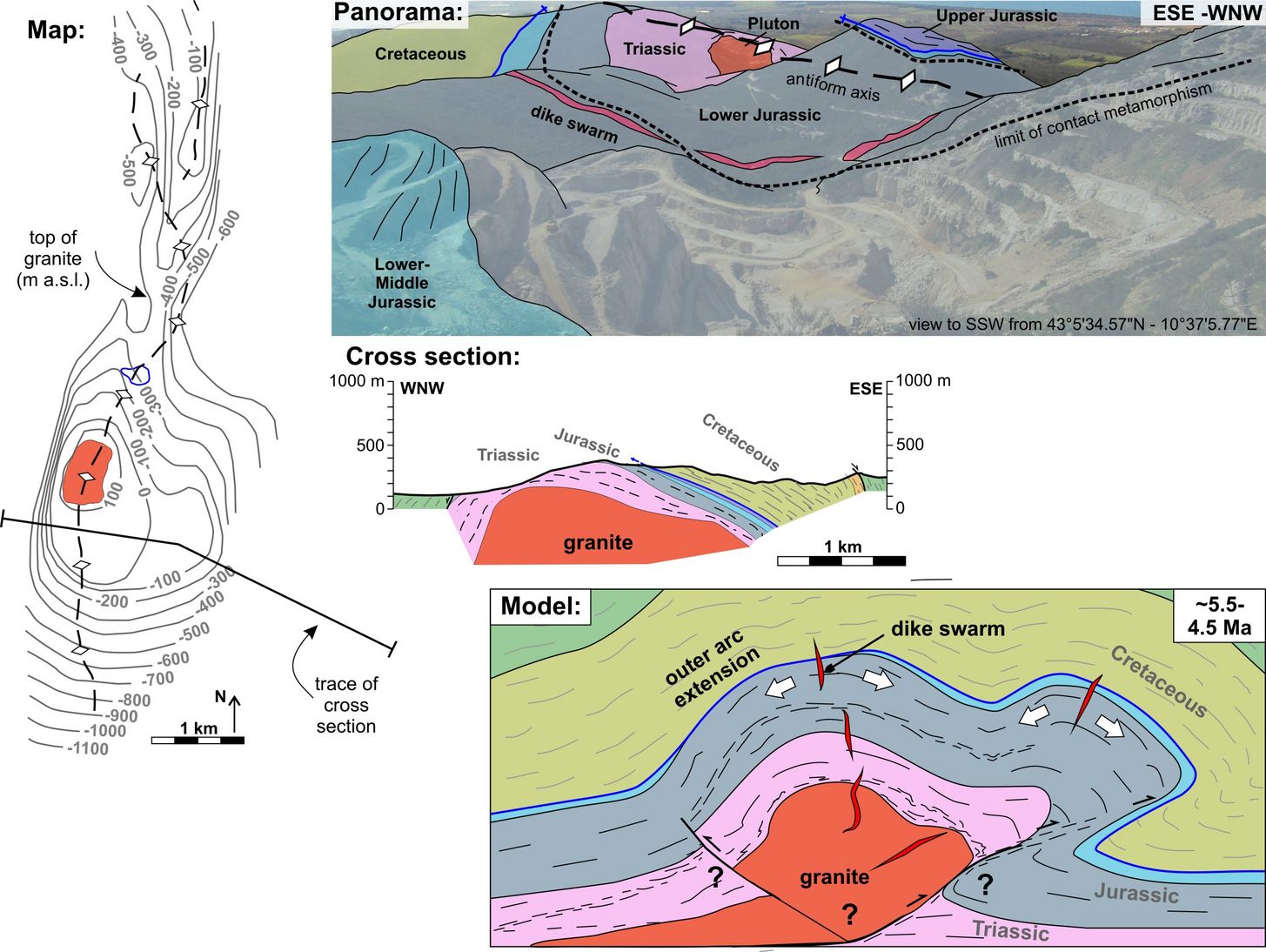Magma emplacing in a growing antiform in Campiglia Marittima (Tuscany, Italy)
The investigation of exhumed granites is fundamental to understand deep magmatic processes, the interaction between pluton emplacement and tectonics, and the development of geothermal systems.
We studied the Botro ai Marmi Pluton in Campiglia Marittima by combining structural-geological analysis, microstructural observations, geophysical, and borehole data, which allowed to reconstruct the peculiar geometry of this intrusion, characterized by a N-S elongation and a narrow shape in E-W profiles. This shape originated from the growth of a thrust antiform, with a trend comparable to similar regional folds in the area, during the migration of magma in its core. We also found evidence of development of high-temperature shear zones in the marbles of Campiglia, the contact aureole of the intrusion, which were folded in the latest stage of antiform development, demonstrating the coexistence of magmatism with active Late Miocene – Early Pliocene tectonics. This work offers an important natural case study to understand how magma migrates in tectonic structures at very shallow crustal settings.
References
Papeschi, S., Bonini, M., Lanari, R., Del Ventisette, C., & Montanari, D. (2025). Growth of a magma-filled antiform from granite emplacement to post-intrusive cooling: The Campiglia Marittima study case (Northern Apennines, Italy). Lithos, 108053. Doi: https://doi.org/10.1016/j.lithos.2025.108053
For information: Samuele Papeschi, CNR-IGG (samuele.papeschi@cnr.it).
